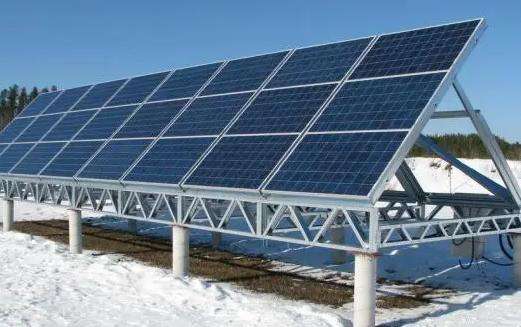Sunlight shines on the p-n junction of the semiconductor, forming new hole-electron pairs. Under the action of the integrated electric field of the p-n junction, the photo-generated holes move towards the p region. and the photo-generated electrons flow towards the n region. When a circuit is connected, a current is produced. This is how photovoltaic solar cells work.
The light-heat-electricity conversion method generates electricity using thermal energy generated by solar radiation. Generally, a solar collector converts the absorbed thermal energy into steam as the working fluid and then drives a steam turbine. to produce electricity. The first process is a light-heat conversion process; the second process is a heat-to-electricity conversion process, which is the same as ordinary thermal power generation.
Detailed information
Features
1. Polarity of solar cells
General characteristics of silicon solar cells. It is transformed into a P+/N type structure or N+/P type structure. P+ and N+ represent the conductivity type of the semiconductor material of the front lighting layer of the solar cell. rear substrate of the solar cell. The electrical properties of solar cells are related to the properties of the semiconductor materials used to make the cells.
2. Solar cell performance parameters
Solar cell performance parameters include open circuit voltage, short circuit current, maximum output power, fill factor, conversion efficiency , etc. These parameters are a measure of the performance of solar cells.
Baidu Encyclopedia - Solar Cells
The principle of solar cells (preferably with diagrams)
Sunlight shines on the p-n junction of the semiconductor, forming new hole-electron pairs. Under the action of the electric field of the p-n junction, holes flow from region n to region p and electrons flow from region p to region n. After switching on the circuit, a current. is formed. This is how photovoltaic solar cells work.
Solar power generation methods There are two solar power generation methods: one is the light-heat-electricity conversion method and the other is the light-direct conversion method. electricity.
Sunlight shines on the p-n junction of the semiconductor, forming new hole-electron pairs. Under the action of the electric field of the p-n junction, holes flow from the n region to the p region and the electrons flow. from region p. n, a current is formed after the circuit is turned on. This is how photovoltaic solar cells work.
1. Solar power generation methods There are two solar power generation methods, one is light-heat-electricity conversion method and the other is direct conversion method light-electricity.
(1) The light-heat-electricity conversion method uses thermal energy generated by solar radiation to produce electricity. Generally, a solar collector converts the absorbed thermal energy into steam as the working fluid and then drives it away. a steam turbine to produce electricity. The first process is a light-heat conversion process; the second process is a heat-electricity conversion process, which is the same as ordinary thermal power generation. The disadvantages of solar thermal power generation are that its efficiency is very low and its cost is high. It is estimated thate its investment is at least higher than that of ordinary thermal energy production. Power plants are 5 to 10 times more expensive. A 1,000 MW solar thermal power plant requires an investment of US$2.0-2.5 billion. the investment for 1 kW is 2,000-25.00 USD. Therefore, it can only be used on a small scale on special occasions, and large-scale use is not economically profitable and cannot compete with ordinary thermal or nuclear power plants.
(2) Direct light-to-electricity conversion method This method uses the photoelectric effect to directly convert solar radiation energy into electrical energy. The basic device for converting light into electricity is the solar cell. A solar cell is a device that directly converts solar energy into electrical energy through the ph effectotovoltaic. When the sun shines on the photodiode, the photodiode converts light energy from the sun into electrical energy, producing current. When many batteries are connected in series or parallel, a solar cell array with relatively large output power can be formed. Solar cells are a promising new energy source with three major advantages: solar cells have a long lifespan and can be invested once and used for a long time as long as the sun exists, they are different from production thermal energy; and nuclear energy production. In comparison, solar cells do not cause environmental pollution; Solar cells can be used in both large, medium and small sizes, ranging from a medium-sized power plant with a million kilowatts to a solar battery for one.domestic, which is unmatched by other energy sources.














